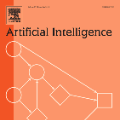Driven by the rapid ascent of artificial intelligence (AI), organizations are at the epicenter of a seismic shift, facing a crucial question: How can AI be successfully integrated into existing operations? To help answer it, manage expectations and mitigate frustration, this article introduces Computational Management, a systematic approach to task automation for enhancing the ability of organizations to harness AI's potential within existing workflows. Computational Management acts as a bridge between the strategic insights of management science with the analytical rigor of computational thinking. The article offers three easy step-by-step procedures to begin the process of implementing AI within a workflow. Such procedures focus on task (re)formulation, on the assessment of the automation potential of tasks, on the completion of task specification templates for AI selection and adaptation. Included in the article there are manual and automated methods, with prompt suggestions for publicly available LLMs, to complete these three procedures. The first procedure, task (re)formulation, focuses on breaking down work activities into basic units, so they can be completed by one agent, involve a single well-defined action, and produce a distinct outcome. The second, allows the assessment of the granular task and its suitability for automation, using the Task Automation Index to rank tasks based on whether they have standardized input, well-defined rules, repetitiveness, data dependency, and objective outputs. The third, focuses on a task specification template which details information on 16 critical components of tasks, and can be used as a checklist to select or adapt the most suitable AI solution for integration into existing workflows. Computational Management provides a roadmap and a toolkit for humans and AI to thrive together, while enhancing organizational efficiency and innovation.
翻译:暂无翻译





